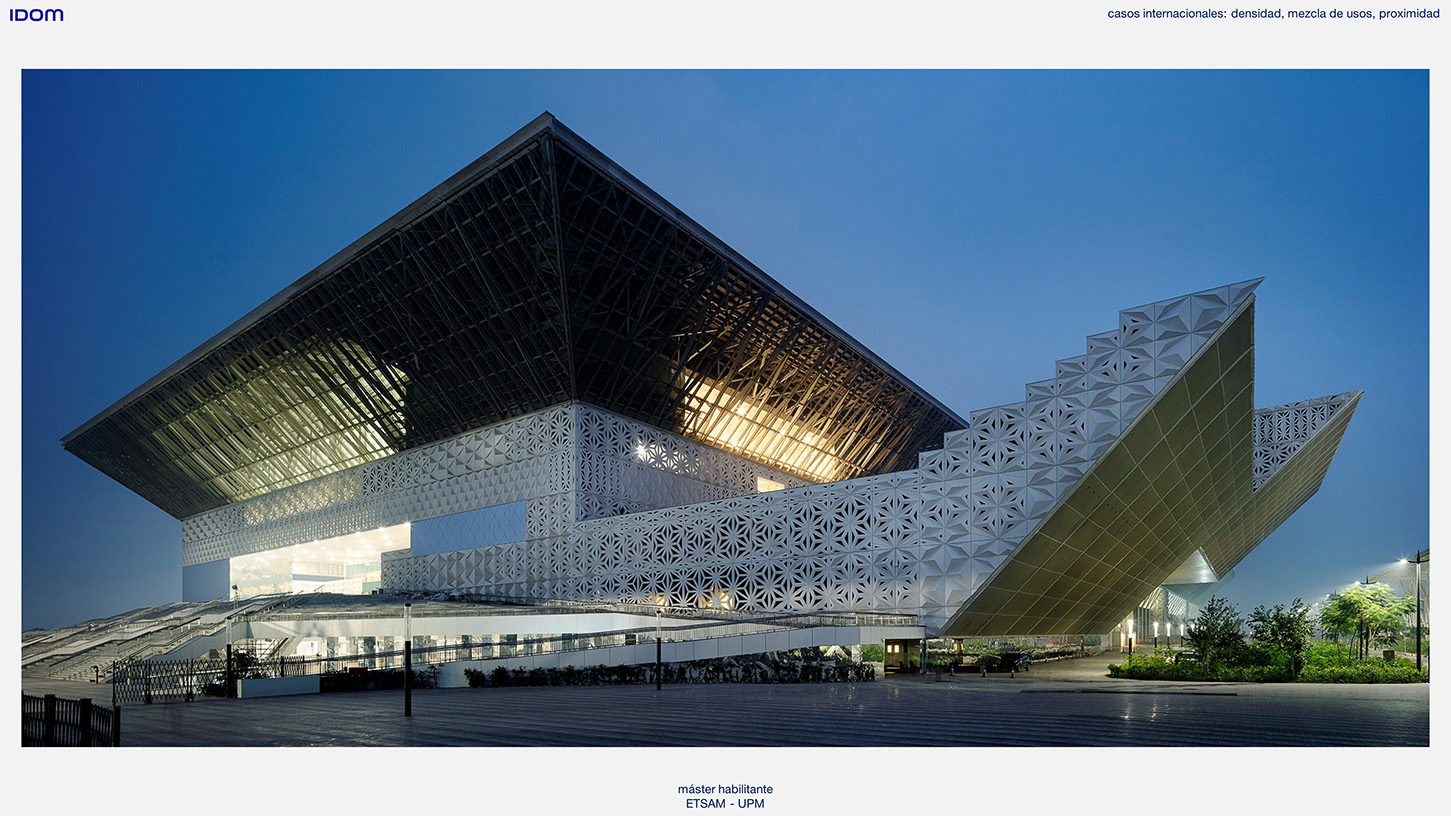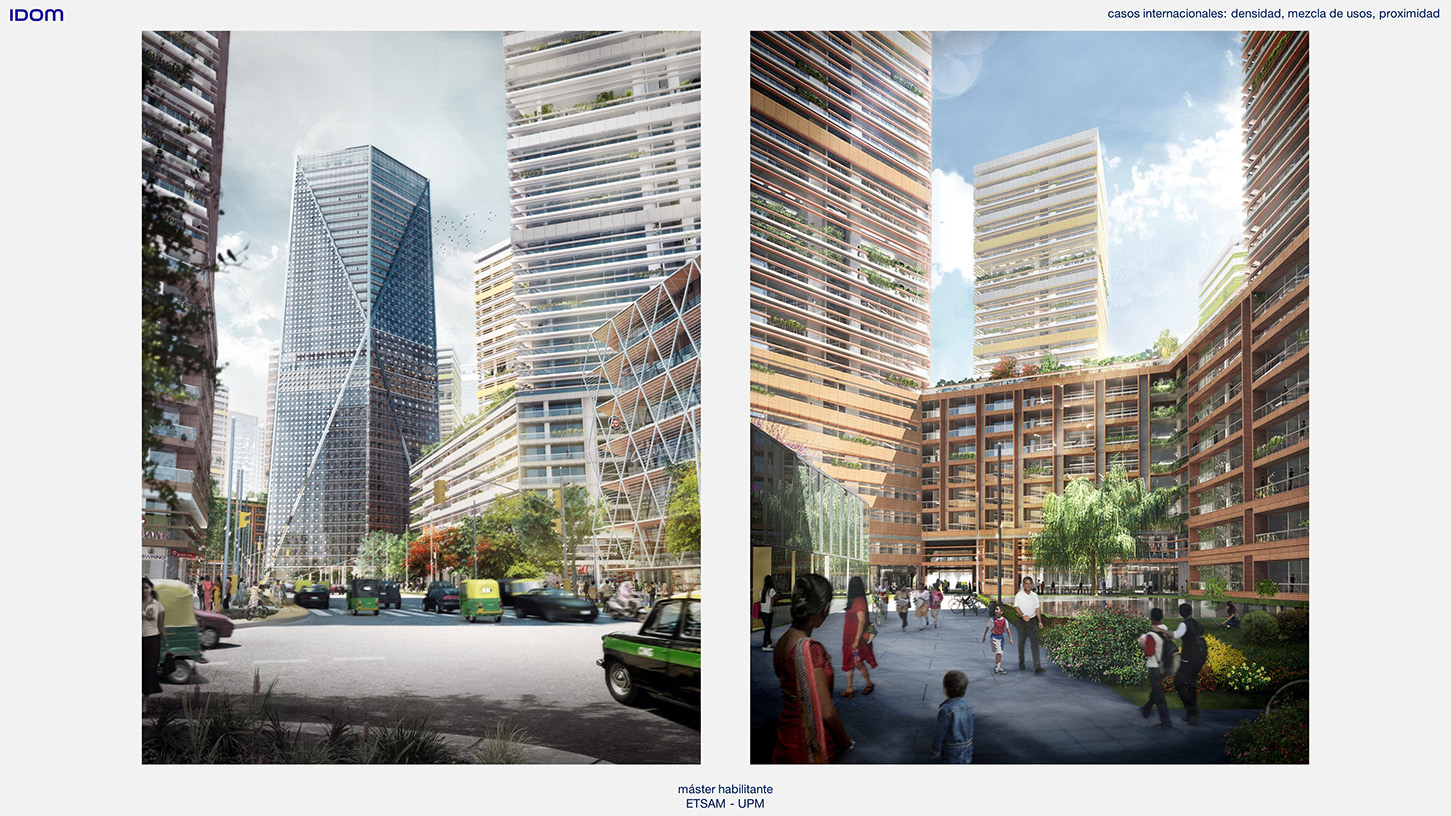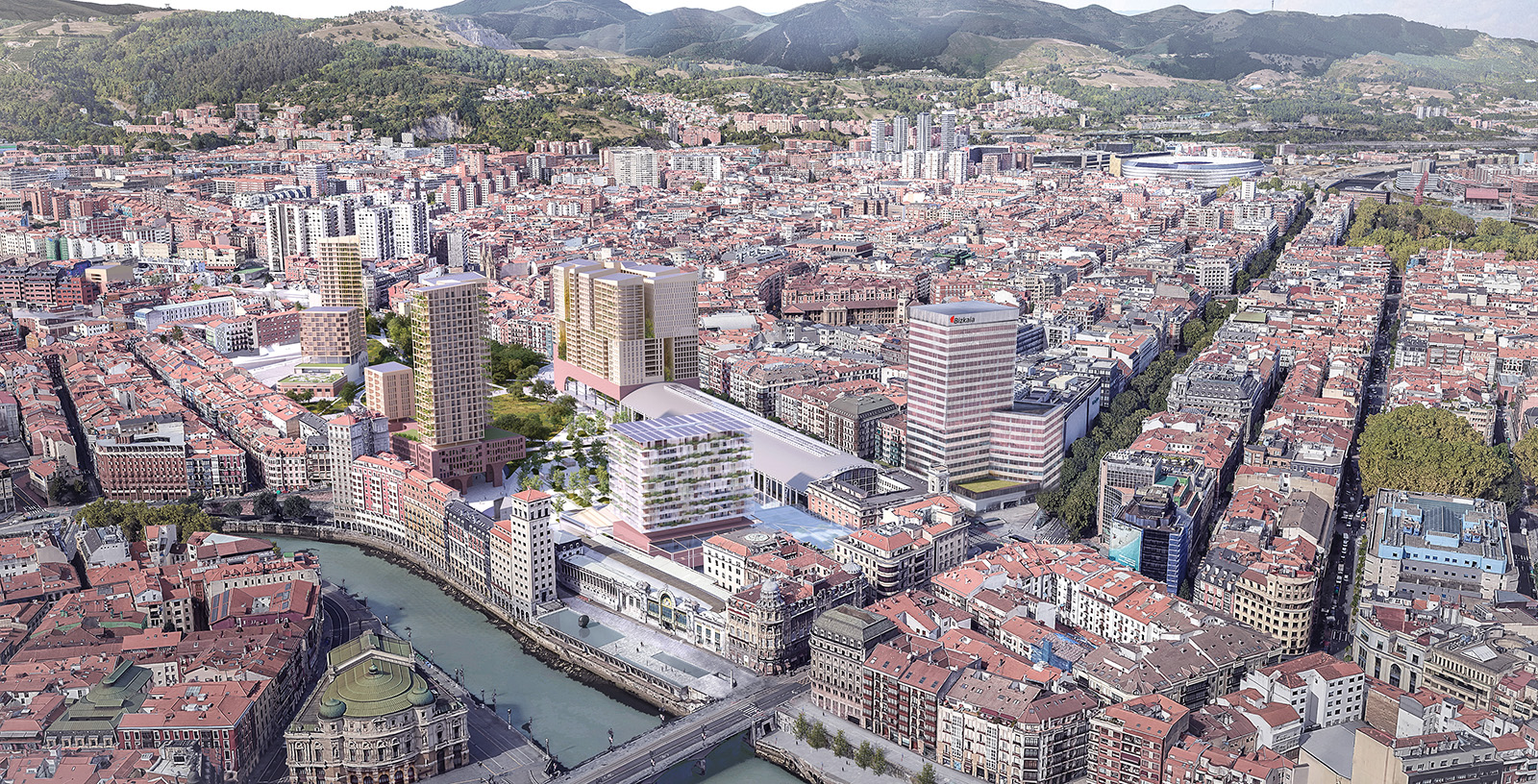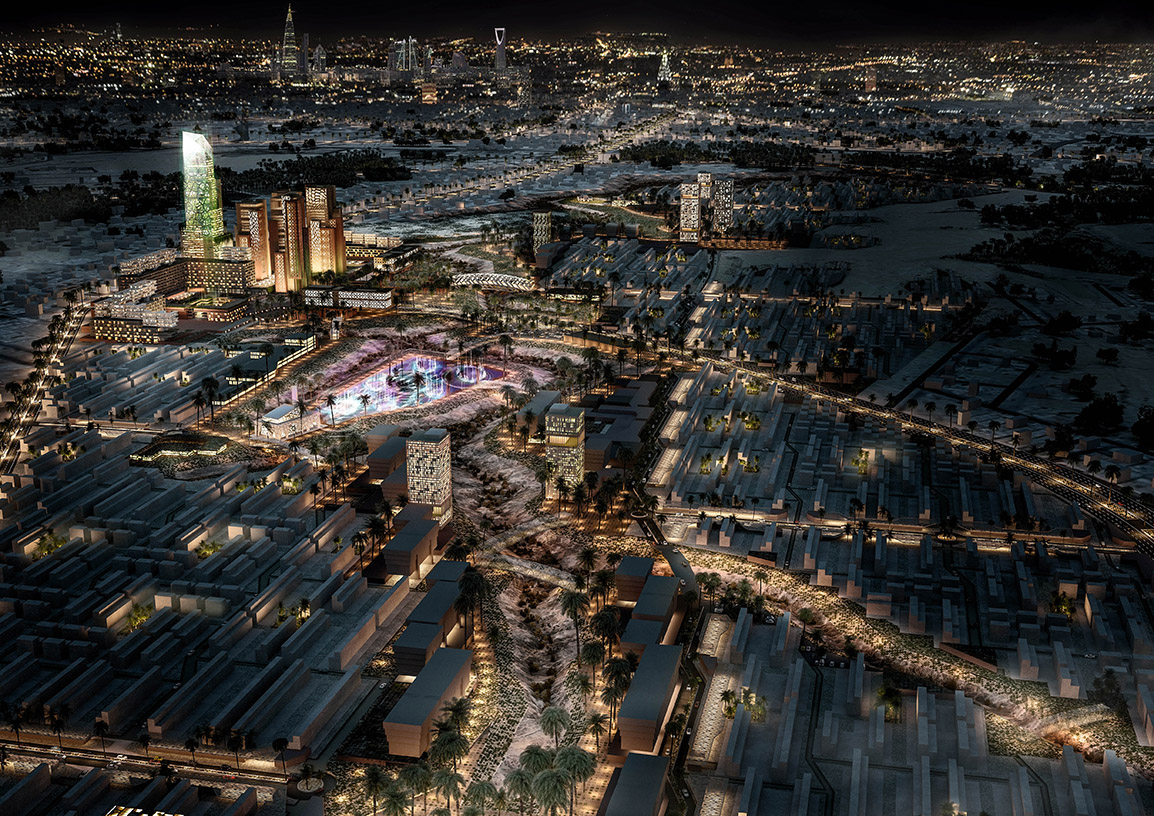The nuts and bolts of a major project for future city planners and architects
Theoretical training is essential in any profession, but getting down to work is equally important. First-hand knowledge of the methodology, the way of working, the lessons learned after the development of a project is priceless. It is a way of approaching and understanding the processes before the time comes to apply them. It is perhaps an intermediate place between theory and practice that enriches the students.
In order to contribute our grain of sand, last October 22, our colleagues Vicky Fernández Añez and Paco Alfaro Anguita gave a lecture in the urban planning course directed and coordinated by José María Ezquiaga Domínguez and José Carpio-Pinedo, in the framework of the Enabling Master of the Escuela Técnica Superior de Arquitectura de Madrid.
They presented the methodology of the team in a reflection on density, proximity and mix of uses in the city. They deepened its application in four projects:
1.- East Delhi Hub: a new district developed in close relationship with nature. Located in Karkardooma, New Delhi, it covers 30 hectares of land. In this case, the mobility strategy was the catalyst for a livable and vibrant urban environment.
2.- Smart City With a Purpose: a new development in Riyadh, around a natural wadi, occupying 170 hectares of land for public space and mixed uses in close proximity. Last June we gave a talk on this experience at the Proximity Planning International Congress, also organized by the UPM.
3.- The Bilbao-Abando station master plan competition: a 13-hectare proposal to bridge the urban gap created by the current Abando station, seeking to revitalize the city through its meeting and mediation places, focusing on the community.
4.- IICC Dwarka: a large exhibition and meeting space that welcomes the future, reflecting the rich heritage of an ancient culture. Covering 90 hectares, it will be the largest exhibition center in India and South Asia.
Finally, Vicky and Paco delved into an aspect of working on large-scale projects that was of particular concern to the attendees: How do you manage such large and complex projects that involve so many professionals?
In our experience, each project must be managed without prescriptions, understanding the singularities of each opportunity, whether they are technical or related to the client and its culture. Nevertheless, there are some invariants, such as personal commitment, effective interdisciplinary integration, ensuring that professionals specialized in the various disciplines maintain a certain independence and have room to contribute, sharing values, processes and methodologies – in our case centered around strategic design -, ensuring a multiscale approach in all phases and, finally, focusing, as far as possible, on generating open and flexible systems rather than closed projects. These five points can be translated into specific strategies for each occasion and, although they do not ensure success, they can bring us closer to it.











